Want to See More of Britain? Take a Hike!
by Dawn Copeman
Some time ago I wrote that the best way to see Britain was by
car. But you can only see so much from a car window! If you
want to really see this green and pleasant land, the best
way is to walk it! And with over 140,000 miles of Public Rights
of Way (trails open to walkers) in Britain, there is bound to be
a walk suitable for you wherever you are staying.

But how do you find a walk? Well, that all depends on the type
of walk you want to do. Unlike in America, our trails are not
graded by difficulty, but they can be grouped into three general
categories: gentle strolls, energising walks and hikes.
From Gentle Strolls to Energizing Hikes
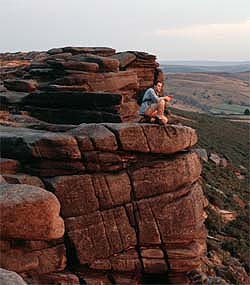 You
might be surprised to discover that some of the best places for
novice walkers to walk are the RSPB Nature Reserves, Wildlife
Reserves, Woodlands, Forests and Waterways. These are not only
free to walkers, but these organisations actively encourage
people to walk. The Royal Forestry Society, for instance, runs a
special event every May to encourage walkers; British Waterways,
which manages British canals, rivers and lakes, have a list of
guided walks and a walk of the month on their website; and
English Nature, which manages many nature reserves, has a
searchable database of walks for each region. All of these
organisations offer well marked trails and generally provide
information boards and leaflets to help you to get the most out
of your walk. You
might be surprised to discover that some of the best places for
novice walkers to walk are the RSPB Nature Reserves, Wildlife
Reserves, Woodlands, Forests and Waterways. These are not only
free to walkers, but these organisations actively encourage
people to walk. The Royal Forestry Society, for instance, runs a
special event every May to encourage walkers; British Waterways,
which manages British canals, rivers and lakes, have a list of
guided walks and a walk of the month on their website; and
English Nature, which manages many nature reserves, has a
searchable database of walks for each region. All of these
organisations offer well marked trails and generally provide
information boards and leaflets to help you to get the most out
of your walk.
Another option for novice walkers is to buy a book of local
circular walks from a bookstore. These walks are graded by
difficulty and often start or finish at a pub, where you can get
something to eat or drink on completing the walk. Alternatively,
you could phone or visit the local Tourist Information Office, as
these often have details of the most popular walks in their
region, as do youth hostels.
If you want to see more of the countryside and are not averse to
putting more energy and effort into your walk, then one of these
walks would be more suitable. I've put these two categories
together as they often share the same routes and resources and
differ only in the length of the walk and the terrain that they
cover.
For walks that are a little more challenging but still follow set
tracks, then you could try one of the National Trust's 39 Neptune
Walks around the coastline of Britain. Or, if you're feeling a
little bit more adventurous, then once again nature reserves hold
the answer. The Isle of Rum in Scotland is one huge nature
reserve with trails that vary from relatively easy to hikes up
mountains.
But if you want to really get out there with a map and see the
countryside, the Ramblers Association should be your first point
of call. The Ramblers were set up over 70 years ago as a charity
to assist walkers. If you visit their website and click on Get
Walking, Paths and Routes, and then the Regional Index, you will
find an alphabetical list of all Public Rights of Way in that
region.
Alternatively, as all trails and Public Rights of Way are clearly
marked on Ordnance Survey Explorer Maps, you could buy one of
these instead. These maps can be bought at most stationers and
bookshops as well as in specialist walking and outdoor shops.
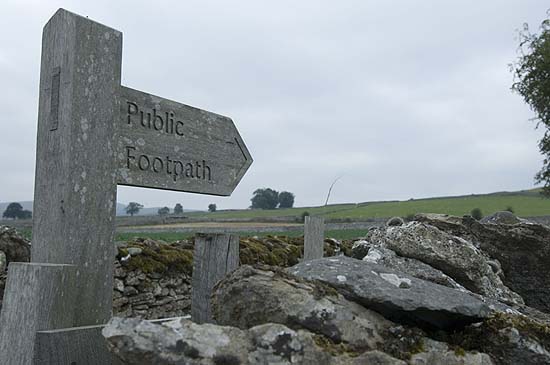
When you are choosing a walk you need to bear in mind that there
are four main categories of Public Rights of Way, and in the
countryside each 'way' is signposted as follows:
- A yellow arrow indicates a footpath. This is open only to walkers.
- A blue arrow indicates a bridleway; this can be used by walkers, horse riders and cyclists.
- A red arrow indicates a byway. Byways are open to all traffic, so watch out for off-road vehicles on these.
- An acorn indicates a National Trail. These are long-distance trails, often encompassing local Public Rights of Way, which follow historic routes. In Scotland long-distance trails are marked by a thistle.
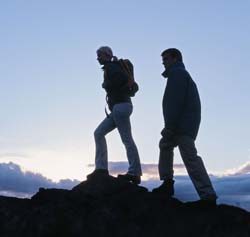 Another useful
site to visit is http://www.walking-routes.co.uk, where you
will find a comprehensive listing of walks across Britain and
useful walking information. Another useful
site to visit is http://www.walking-routes.co.uk, where you
will find a comprehensive listing of walks across Britain and
useful walking information.
Since 2000, another 3.4 million acres of land has been made
available to walkers. This land is known as Open Access Land and
is clearly marked on Ordnance Survey Explorer maps. This land is
in private ownership and the landowners can still restrict access
to it for various reasons. In Scotland, however, walkers have
access to all land unless the landowner can provide a very good
reason why walkers should not walk there.
Sudip Dasgupta of the Central London Outdoor Group, a walking
group, advises new walkers or walkers new to a region to avoid
walking on Open Access Land: "You don't know where you're going
to end up, or how you can rejoin the walk you are following.
Also, open access land doesn't mean it is land that is fit to
walk across; it could be very muddy, boggy or blocked. Walkers
are better off sticking to well-known and used paths and
trails."
So now you've chosen a route, what else do you need to know?
What to Wear, What to Take
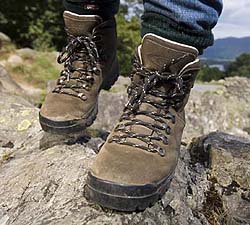 For all walks, including gentle strolls, you should
wear a pair of lightweight trousers to protect the legs from
scratches, insects and ticks. Ticks carry Lyme disease, which,
whilst rarely fatal, can be debilitating. You should also carry a
lightweight waterproof jacket, as the weather in Britain is so
unpredictable! In summer you should wear a sun hat and take
suntan lotion with you. In winter you will need a woollen hat
and some gloves. For all walks, including gentle strolls, you should
wear a pair of lightweight trousers to protect the legs from
scratches, insects and ticks. Ticks carry Lyme disease, which,
whilst rarely fatal, can be debilitating. You should also carry a
lightweight waterproof jacket, as the weather in Britain is so
unpredictable! In summer you should wear a sun hat and take
suntan lotion with you. In winter you will need a woollen hat
and some gloves.
Tony Jewitt, a walking friend of mine, advises that you wear
walking boots to support the ankle. You should 'wear in' your
boots before you go walking in them. To avoid getting blisters
on longer walks, you should also wear two pairs of socks -- a
cotton pair next to the skin and a woollen pair on top. Tony
informs me that waterproof socks are now available: ideal if
you're out in a downpour!*
For most walks in summer in England and Wales then you don't need
to take that much equipment with you. If you're off for a stroll
around a nature reserve or woodland, you will only need to make
sure you follow the trail, take some water to drink and don't
forget your camera!
For walks out in the countryside you will need:
- A full one-litre water bottle
- A basic first-aid kit -- plasters [bandaids, to Americans], antiseptic wipes, gloves, sterile dressings and a triangular bandage.
- A mobile phone
- A packed lunch or money for lunch
- A walking stick (useful to help retain your balance when walking down an incline)
- A map
For walks in the Lake District, the Peak District or Scotland you
will also need to take:
- Extra layers of clothing
- Waterproof trousers
- High-energy snacks (i.e. chocolate or Kendal Mint Cake -- a high sugar snack developed for walkers, but just as delicious for non-walkers too!)
- A survival bag (a foil sleeping bag to keep you warm)
- Water purification tablets
- A compass
- Insect repellent
- A torch and spare batteries
- A whistle
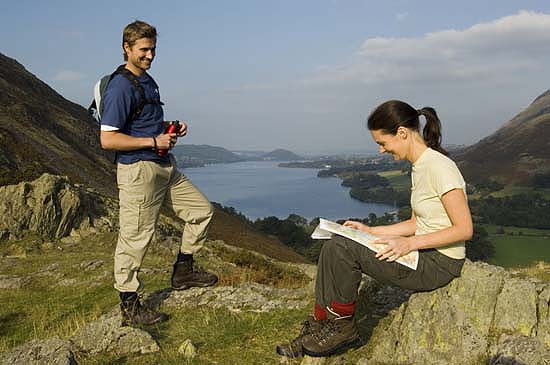
Tony, who has completed many walks in Scotland and Wales, always
takes a two-way radio with him. He has used it once to guide his
walking partner, who got lost! Tony always programs the number
for the local Mountain Rescue service into his mobile phone, just
in case. If you find you need them, ring 999 and ask for
Mountain Rescue.
What You Need to Know Before You Go
Wherever you are walking in England and Wales, you need to adhere
to the Country Code. This basically states that you
should:
- Leave all gates and property as you found them
- Take all litter home with you or dispose of it in litter bins
- Stick only to the signposted routes
- Keep dogs under strict control
- Be considerate towards other walkers.
In Scotland you need to follow the Scottish Outdoor Access
Code, which states that you should:
- Take responsibility for your own actions
- Respect other walkers
- Take care of the environment
Accommodations
If you are following a long-distance route, there are usually
youth hostels, campsites or Bed and Breakfast accommodation close
to the trail. Tony advises walkers to always book ahead,
especially if you are walking in the Peak District or Scottish
Islands. Do note that you cannot camp wherever you feel like it
in England or Wales. This is trespass and against the law. In
Scotland, however, such camping is perfectly legal.
Walking in Scotland, the Peak District or the Lake
District
These are beautiful parts of the country that provide challenging
walks. Tony prefers walking in Scotland, particularly on the
Scottish Islands, as the scenery is breathtaking and each island
has its own characteristics. However, the weather in these areas
can change suddenly and walking conditions can deteriorate
rapidly, so you should only tackle a walk in these regions if you
are an experienced walker and map reader, or are in the company
of an experienced walker. When you walk in these regions you
will need to alert either the hotel, guesthouse or hostel manager
of your walk, when you are setting off and when you will return,
so that they can then alert Mountain Rescue if you don't return
as planned. On the Isle of Rum there is a Mountain Rescue Post
and each walker has to complete a postcard detailing their route
and their expected time back before commencing the walk. Then if
a walker doesn't return; Mountain Rescue will know where to go
and look for them.
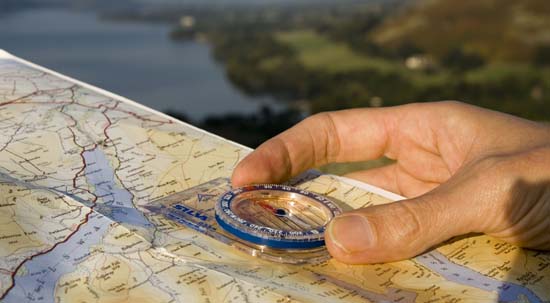
Walking Holidays or Walking in a Group
If you'd like to walk in Britain, but you'd rather not walk on
your own, then why not go on an organised walking holiday
instead? Many organisations offer walking holidays of varying
durations and difficulties, from short breaks to fifteen-day
walking holidays. Some walking holidays are self-led, which
means you will be given the map and off you go. Others are
guided, and these guided holidays are an excellent way to get
started in walking, as they are led by experienced walkers who
know the routes. Before you book your walking holiday, check if
they do luggage transfers for you; some do and some don't, and if
they don't, you'll need to carry your belongings with you while
you walk!
However, if you don't want a walking holiday, but just to go for
an occasional walk whilst on holiday, then why not join a local
walking group for a walk? There are many groups around the
country and most would welcome you. Alternatively, why not attend
a walking festival? Many of these are held throughout the year
and they offer you the chance to join a group for a specific
walk. Some of the Walking Festivals coming up this year include:
- Flora of the Fells Festival, Lake District. (April to September) Over a hundred
walking events of varying difficulty.
- Step into Cheshire (16-24 September)
- Richmond (Yorkshire) Walking Festival (21st September-1st October)
So, the next time you're in Britain, don't just look at it
through a window of a car or train; get out there, touch it, feel
it, live it. As Tony puts it, "There is no better hobby!"
What's more, you'd be surprised at what you might find. Walkers
in Swaledale in Yorkshire recently found themselves being
serenaded by a string quartet at the top of one dale and a
guitarist on another, and took part in a barn-dance on third.
Now, you wouldn't see that from inside your car!
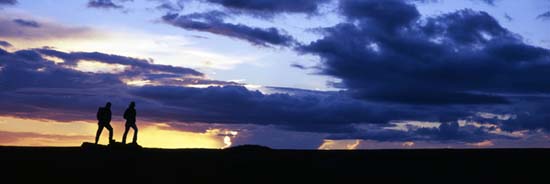
Related Articles:
- Get On Yer Bike!, by Dawn Copeman
- https://www.timetravel-britain.com/articles/travel/bike.shtml
- Cycling on the Old Railways, by Liz Hearn
- https://www.timetravel-britain.com/articles/travel/railways.shtml
- The Joys of Ordnance Survey Maps, by Lise Hull
- https://www.timetravel-britain.com/articles/roots/roots01.shtml
- Letterboxing on Dartmoor: An Addictive Pastime... for the Brave!, by Jane Gilbert
- https://www.timetravel-britain.com/articles/country/dartmoor.shtml
More Information:
We regret that we no longer have the resources to maintain up-to-date links and/or hours and pricing details for the various sites and attractions listed on this website. For more information about the location(s) listed above, please use your favorite search engine or visit Wikipedia.
Dawn Copeman is a freelance writer and commercial writer who has had more than 100 articles published on travel, history, cookery, health and writing. She currently lives in Lincolnshire, where she is
working on her first fiction book. She started her career as a freelance
writer in 2004 and has been a contributing editor for several publications, including TimeTravel-Britain.com and Writing-World.com .
Article © 2006 Dawn Copeman
Photos courtesy of Britainonview.com
|
